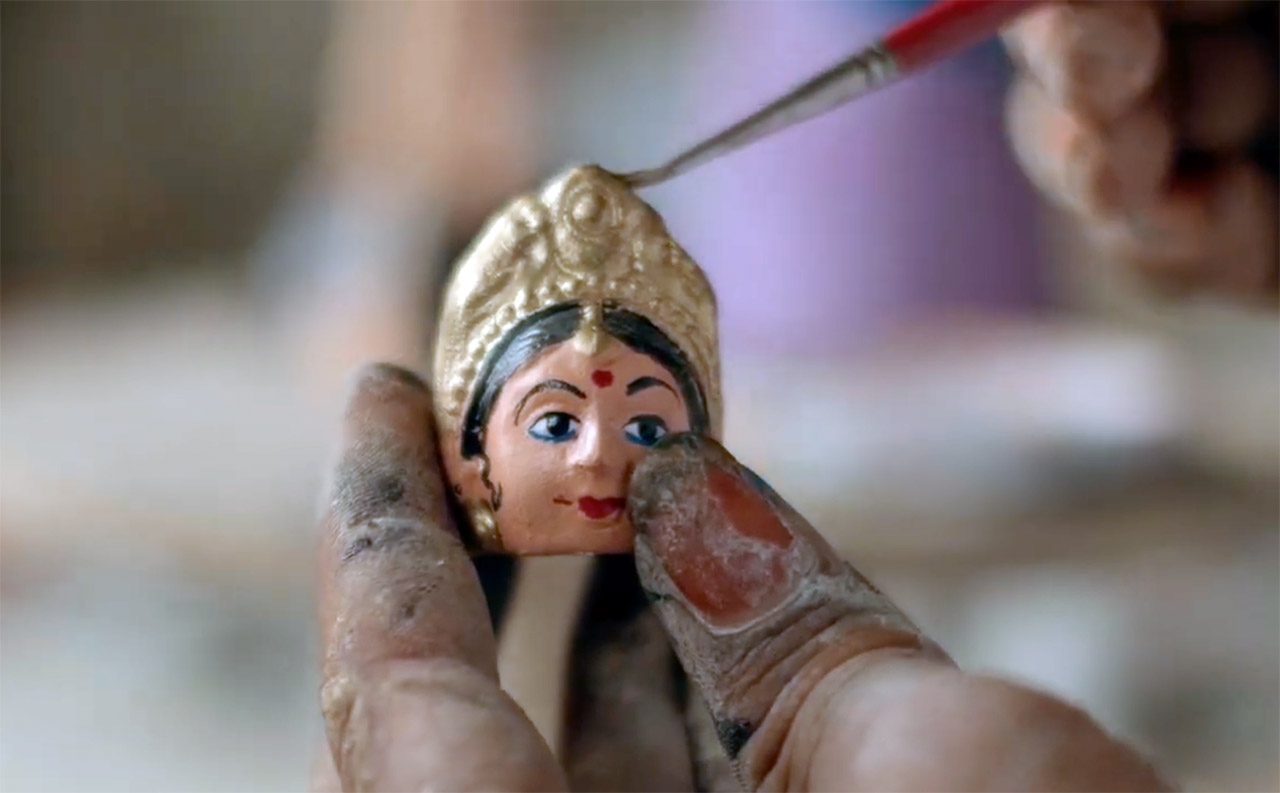
Practically every home in South India has one of them. They are not simply pretty dancing figurines, but symbols of Southern India’s history of craftsmanship, culture and in a less obvious way, an understanding of physics. You might think some complex technological innovation of the region is being referred to, but no. The subject here is the humble, rolly polly Thanjavur doll of Tamil Nadu, widely treasured for its beauty and endearing dance.
Suggested Read – Traditional Toys of India: Practice of Culture and Profession
Uniqueness of Thanjavur dolls

While Thanjavur dolls are also popular for their unique beauty, their unique ability to stand upright, no matter how deeply toward the ground they are forced, is the most renowned. As children, many would have spent multiple hours to bend the dolls into oblivion, miserably failing to do so at the end. This is a unique ability of the Thanjavur doll, and demonstrates the mediaeval craftsmen’s superior understanding of Physics even so many centuries ago.
The Physics of Thanjavur dolls

Most of the weight of the dolls is concentrated at the very bottom or close to it. This creates a low centre of gravity, making the toy extremely stable. In addition to that, the bottom is rounded, and hence, when toppled, oscillates for a short period before returning to the equilibrium position.
History of Thanjavur Dolls

Thanjavur Dolls date back to the sixteenth century- to the reign of the local Thanjavur Nayaks, a clan of Telugu rulers under the Vijayanagara empire. They also flourished under the rule of the great Marathas. The fact that the toys worked on the basis of stability due to the position of the centre of gravity, before the discovery of gravity by Newton, is notable. The toys are traditionally made by a certain sect of Kshatriya women in the region. Since the beginning, they have been sold outside the Big Temple for Brihadeeswara in Thanjavur. Till today, it is said that a visit to this ancient temple is incomplete without buying a Thanjavur doll.
Thanjavur Doll Making

Traditionally, the toys are made using clay. They are made of Plaster of Paris, wood pulp and tapioca flour today.
Three parts of wood pulp are mixed with one part of plaster of paris and some tapioca flour. This creates a doughy mixture which is stretched and flattened, like a thick sheet. This sheet is then put into a cast, giving the doll its intricate ornaments and shape. The rounded bottom component of the dolls and the top, containing the facial features and ornaments are cast separately.
The cast sheets are allowed to dry for half an hour, after which wet paper is added on the back, like in papier mache crafts. This step is done to strengthen the material. Once the paper dries, a coat of tapioca flour is painted on top. Clay, traditionally from the banks of the Cauvery, is added to the bottom component of the toy to make it heavier. Then, the top and the bottom components of the dolls are affixed and painted in vivid colours.
Motifs in Thanjavur Dolls

Traditionally, the dolls have only been made in Raja-Rani, i.e, King and Queen pairs. However, different motifs are also being used nowadays, and even different designs. There are now many kinds of similar dolls that are being made based on the physics of oscillations and centre of gravity. These include single dolls of female classical dancers, Rajasthani couple dolls and more. However, traditionally, Thanjavur dolls are strictly made in Raja-Rani pairs.
Recognition for Thanjavur Dolls
Thanjavur dolls have been given their due recognition, but are also being appropriated. While all rocking dolls are beautiful and deserve praise, they are being mistaken for Thanjavur dolls. The government has conferred the GI or geographical Indication tag on the dolls to prevent misappropriation.
The GI tag means recognition of the fact that the dolls only have a certain unique geographical origin, outside of which any doll, even if made in a similar style, cannot be called a Thanjavur Doll.
Thanjavur dolls Present State

Thanjavur dolls continue to be popular across India, but the rise of cheap Chinese toys has definitely made times harder for traditional skilled artisans. Even outside the Brihadeeswara temple, where Thanjavur dolls have always been sold traditionally, there are more stalls of cheap plastic imported toys than of the iconic Thanjavur dolls. Things are looking bleak for the artisans as dwindling sales has had the artisans shifting from traditional clay to cheaper and scrap materials like waste paper and plaster of paris. The toys themselves are no longer valued and cherished like they used to be by the people of the region. A majority of sales come from the floating tourist population- a volatile and unreliable market.
Conclusion
Thanjavur dolls are one of the simplest and most beautiful symbols of mediaeval India’s craftsmanship and elegant understanding of the sciences. They deserve to be cherished and treasured for centuries more, but the artisans’ circumstances are looking bleak. With an increase in awareness amongst the general populace about arts and culture, and increased focus by the government on the welfare of traditional artisans- as is evident from schemes akin to the newly launched Vishwakarma scheme- we can only hope that things get better while doing our part to support the traditional crafts of our country.







Earlier many a household used to have a Tanjavur like dancing doll. It was a most commonly seen doll. But, as the writer rightly says, people are unmindful of keeping the traditions alive and instead accustomed to buying cheap plastic dolls. More support from the government to the artisans and the right awareness and encouragement will bring back glory to this great art and make it viable.
Hey Nagendra, thanks for making the valuable comment, hope the people in power act!